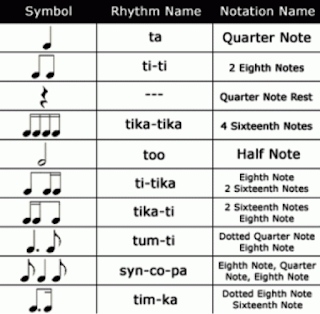The Vocal Fry Register
The vocal fry register is the lowest
vocal register of the human voice. This
register can also be called the Pulse Register, Glottal Fry, Rattle, or
Scrape. To access this register, the
Glottis must be relaxed and loose so that you allow air bubbles through it,
creating a rasping, rattling, crackling, or frying sound at low frequency. There are a few uses for this registration
in singing or performing. Uses
include: warming up the lowest areas of
the vocal range; relaxing the lowest parts of the voice up into the modal
register or chest register; and as a “scream” for specific types of music, such
as heavy metal. It is VERY important,
however, to produce the Vocal Fry sound with an Open throat and a Lowered
Larynx. To correctly create sound in
this register, the Arytenoid Cartilages in the Larynx compress together so that
the Vocal Folds themselves are loose and limp, which makes them vibrate much
less often than “normal”. This slackened
glottal closure produces the low crackling sound as air passes through.
This is a somewhat controversial
register. Many voice teachers don’t even
believe it to be a real register and it is true that not all singers can access
it, especially those with medium and higher voices. What singers need to understand about the
Vocal Fry register, however, is NOT that it is low but that it is a totally
different sound, and a totally different approach to a sound. The best way to attempt this sound is to hum
to the very bottom of your range. DON’T
PUSH OR STRAIN! When you get to the
lowest note you can “sing”, let your voice fall even lower in kind of a
“growl”. Relax and do it again. Once you “find” your Vocal Fry, remember
DON’T PUSH or STRESS. Continue to access
your Fry in this way until you can simply sing in the Fry Register without
having to get to it from the bottom of your range. When you are able to directly access the Fry
Register, you can use it to slide up and down, getting more and more
comfortable. This is not a register that
you want to use permanently as it can eventually cause you to lose higher notes
off your Chest or Modal Register. There
are even practitioners who believe extended Vocal Fry Register use can damage
the Vocal Folds because the Vocal Fry requires the Arytenoid Cartilages to
squeeze closed during the entire time it is being utilized.
Don’t expect the Vocal Fry to “sound”
like a normal vocal tone. Certainly in
the early stages, a Vocal Fry sound probably won’t have a pitch; it sounds like
a growl or groan or exasperation. It is
very airy and not easy to control at first but it should NOT be stressing. The REASON this is a different register is
BECAUSE it is PRODUCED differently and the resulting SOUND will FEEL and SOUND
strange at first but can help your voice warm up more quickly and relax your
throat, when done for shorter periods of time.
Thanks for reading this post. Stay toned for the next posts on all the
other Vocal Registers. I encourage you
to talk to your voice teacher about exploring each of them more thoroughly to
enhance, strengthen, and extend your vocal range, control, and power. As always, I greatly appreciate your
questions, comments, and suggestions for future blog posts. If you have any questions about my lessons or
me, just check out my website at www.SingitForward.net. See you next time! Sing it Forward!


Comments
Post a Comment